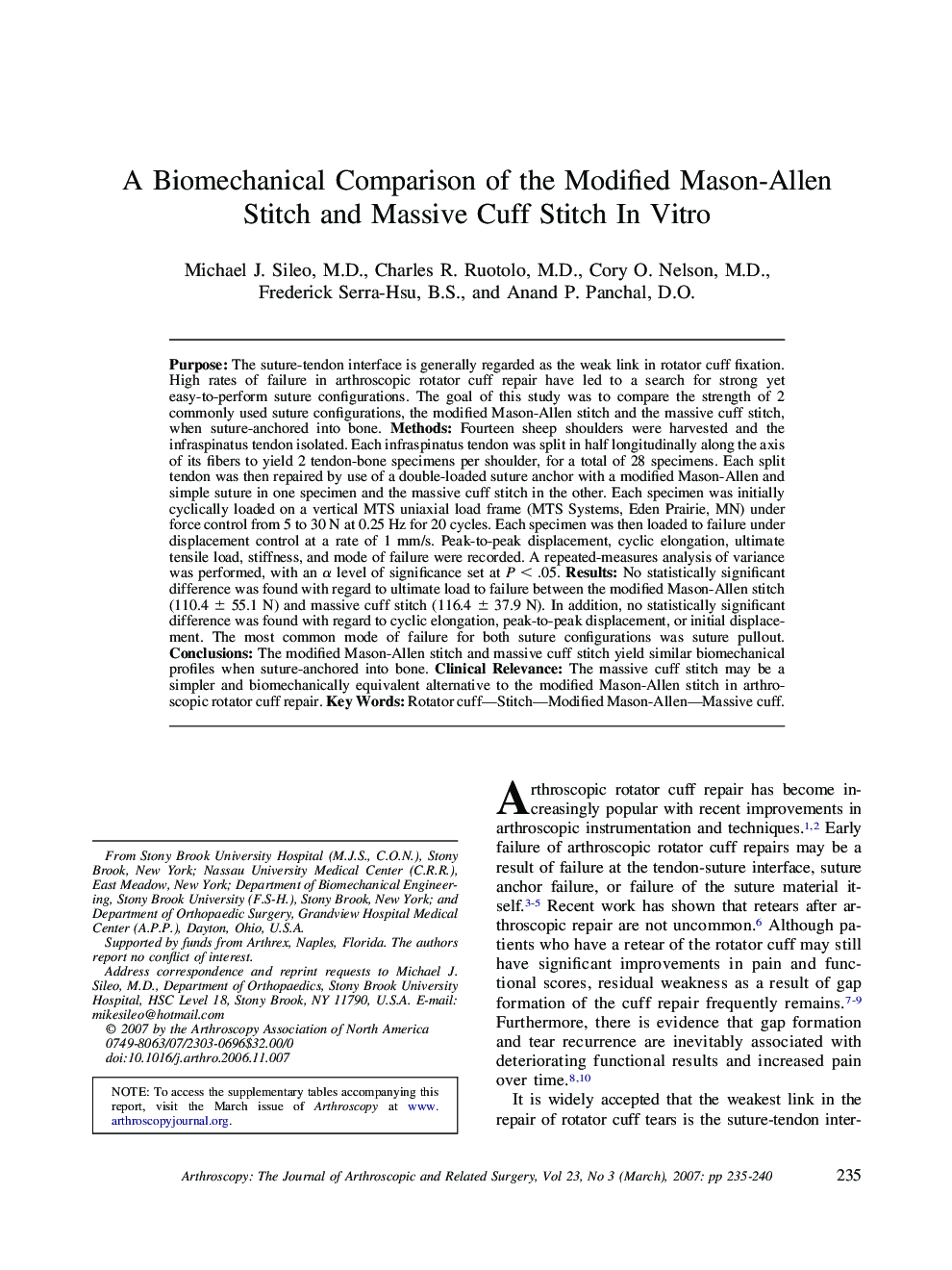| Article ID | Journal | Published Year | Pages | File Type |
|---|---|---|---|---|
| 4047611 | Arthroscopy: The Journal of Arthroscopic & Related Surgery | 2007 | 8 Pages |
Abstract
Purpose: The suture-tendon interface is generally regarded as the weak link in rotator cuff fixation. High rates of failure in arthroscopic rotator cuff repair have led to a search for strong yet easy-to-perform suture configurations. The goal of this study was to compare the strength of 2 commonly used suture configurations, the modified Mason-Allen stitch and the massive cuff stitch, when suture-anchored into bone. Methods: Fourteen sheep shoulders were harvested and the infraspinatus tendon isolated. Each infraspinatus tendon was split in half longitudinally along the axis of its fibers to yield 2 tendon-bone specimens per shoulder, for a total of 28 specimens. Each split tendon was then repaired by use of a double-loaded suture anchor with a modified Mason-Allen and simple suture in one specimen and the massive cuff stitch in the other. Each specimen was initially cyclically loaded on a vertical MTS uniaxial load frame (MTS Systems, Eden Prairie, MN) under force control from 5 to 30 N at 0.25 Hz for 20 cycles. Each specimen was then loaded to failure under displacement control at a rate of 1 mm/s. Peak-to-peak displacement, cyclic elongation, ultimate tensile load, stiffness, and mode of failure were recorded. A repeated-measures analysis of variance was performed, with an α level of significance set at P < .05. Results: No statistically significant difference was found with regard to ultimate load to failure between the modified Mason-Allen stitch (110.4 ± 55.1 N) and massive cuff stitch (116.4 ± 37.9 N). In addition, no statistically significant difference was found with regard to cyclic elongation, peak-to-peak displacement, or initial displacement. The most common mode of failure for both suture configurations was suture pullout. Conclusions: The modified Mason-Allen stitch and massive cuff stitch yield similar biomechanical profiles when suture-anchored into bone. Clinical Relevance: The massive cuff stitch may be a simpler and biomechanically equivalent alternative to the modified Mason-Allen stitch in arthroscopic rotator cuff repair.
Keywords
Related Topics
Health Sciences
Medicine and Dentistry
Orthopedics, Sports Medicine and Rehabilitation
Authors
Michael J. M.D., Charles R. M.D., Cory O. M.D., Frederick B.S., Anand P. D.O.,
